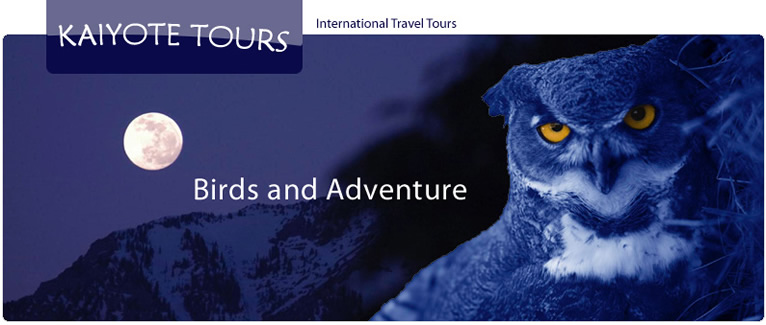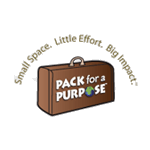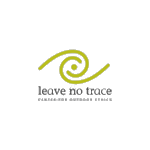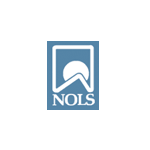
If you are interested in Guided Backpacking Trips Rocky Mountain National Park, come and join us at Kaiyote Tours!
There is nothing more wonderful than waking up in the backcountry. Mountain mornings are cool and calm. Night skies are brilliant with stars and the air is quiet. To awake next to a high mountain crystal clear lake or stream is an incredible experience.
Rocky Mountain National Park is a high elevation area. The lowest point in the park is about 8,100 feet and most backcountry campsites are located from 9,500 - 10,500 feet and some sites are located over 11,000 feet. For this reason, we only offer private trips so your entire group will be similarly acclimated to the altitude. We recommend that you arrive a few days early and stay in Estes Park (7,800 feet) or Grand Lake (8,300 feet) to help you acclimatize. Altitude sickness and fatigue will ruin your trip, so please Plan Ahead and Prepare (Leave No Trace principle #1).
We recommend hiking to a location where we can set up a base camp and then day hike and explore from there. A base camp really helps if you are not completely acclimated to the altitude.
Call us at +1 970-556-6103 or email us at KaiyoteTours@gmail.com to book your trip!
These backcountry sites are located on the west side of RMNP, the Grand Lake side. You will need to arrive at least one day prior to the trip and stay in Grand Lake, because we have a short meeting the night before. If you live at sea level, we recommend arriving a few days before your trip to help you better acclimated to the elevation.
The 2025 season is over. Time to book 2026! Below was our 2025 season and 2026 will be similar and special requests can be added.
July 21 - 23, 2025: Coral Creek trailhead (Hague Creek), Cache site is located at 10,150 feet, 2-nights/3 days, moderate challenge level, 5-miles each way with 150 feet elevation gain. Day one: Hike to campsite and set up base camp for 2-nights. Day two: Hike (with only day packs) further up either Chapin Creek or the Cache la Poudre drainage. This area is abundant with wildlife. Day three: Hike out. This is a private trip and up to 6 spots are available. spots left = 0
July 28 - 30, 2025: Timber Creek Lake Trail, Timber Creek site is located at 10,400 feet, 2-night/3-days, moderate - difficult challenge due to elevation gain. This site is a 3-mile hike in and is located at 10,400 feet. It is a 1,390 foot elevation gain to the site. From the Timber Creek site, we can day hike 2 miles to Timber Lake (11,060 feet). The hike to Timber Lake and the surrounding area is as beautiful as the mountains get. The Timber Creek campsite is located in the pine forest along Timber Creek. This is a private trip for your group and up to 6 spots are available. spots left = 0
August 14 - 16, 2025: East Inlet Trail, Cat’s Lair site, located at 9,200 feet, 2-nights/3 days, moderate challenge level, 4-miles each way with 810 feet elevation gain. Day one: hike to campsite and set up base camp for 2-nights. Day two: Hike (with only day packs) 1 mile each way to Lone Pine Lake, or 3-miles each way to Lake Verna, or 4-miles each to Spirit Lake. Day Three: Hike out. This is a private trip and up to 6 spots are available. spots left = 0
August 14 - 16, 2025: Timber Creek Lake Trail, Timber Creek site is located at 10,400 feet, 2-night/3-days, moderate - difficult challenge due to elevation gain. This site is a 3-mile hike in and is located at 10,400 feet. It is a 1,390 foot elevation gain to the site. From the Timber Creek site, we can day hike 2 miles to Timber Lake (11,060 feet). The hike to Timber Lake and the surrounding area is as beautiful as the mountains get. The Timber Creek campsite is located in the pine forest along Timber Creek. This is a private trip for your group and up to 6 spots are available. spots left = 0
August 20 - 22, 2025: North Inlet Trail, Grouseberry site, 2-night/3-days, moderate challenge. This site is a 6.2 mile hike in and is located at 9,250 feet. It is a 710 foot elevation gain to the site. From the Grouseberry site, we can day hike 1.5 miles each way to the North Inlet Falls (9,600 feet). From the waterfall, we can continue to hike another 1- 2 miles each way to Lake Nakoni and Lake Nanita. The Grouseberry campsite is located in a pine forest along the North Inlet creek. This is a private trip for your group and up to 6 spots are available. spots left = 0
August 26 - 29, 2025: Green Mountain Trail, Tonahutu Meadows site, 3-nights/4-days, moderate challenge level with 6.2 mile each way and located at 10,050 feet. It is a 1,256 foot elevation gain to the site. Day one: Hike to site and set up base camp for 3-nights. Day two: Hike (with only day packs), 2.5 miles each way to Haynach Lakes (11,060 feet). Day 3: It is possible to hike further up the Tonahutu trail as far as you like. The trail goes up to the continental divide and to the top of Sprague Pass at 11,709 feet. This is a good area to see moose. Day four: break camp and hike out. The Tonahutu Meadows site is located along the Tonahutu Creek in the pine forest. This is a private trip for your group and up to 6 spots are available. spots left = 0
September 1 - 3, 2025: Onahu Trail, Upper Onahu site, 2-night/3-days, moderate challenge level with 2.8 miles each way and located at 9,600 feet. It is a 780 foot elevation gain to the site. Day one: Hike to site and set up base camp for 2-nights. Day two: Hike (with only day packs), either to Long Meadows or Tonahutu Meadows (Big Meadows), or hike further to Granite Falls. Day 3: Break camp and hike out. The Upper Onahu site is located along the Onahu Creek in a pine forest. This is a private trip for your group and up to 6 spots are available. spots left = 0
Dates and destinations for 2026 or still flexible, let us know what dates and locations you want.
Pricing for Private over-night backpacking trips
Private Tours: $265 per person/per day, (based on a minimum of 2-people and a maximum of 6-people), $450 per day for a private, solo traveler trip. The backpacking fee includes food, gear, and back-country permit.
Included in fees
1) Tent
2) Sleeping bag
3) Sleeping pad
4) Backpacking pack
5) Bear canister (hanging food prohibited)
6) Stove and fuel
7) Water filter
8) Food: Let us know if you require coffee/caffeine, vegetarian or anything special.
Although we provide all the necessary gear, you can also bring your own gear.
Not included: Transportation to and from trailhead and national park entrance fee for your vehicle. If you will not have a car, we can possibly make transportation arrangements for you, based on availability.
Concerned about carrying a heavy pack at high altitude?
If you want to go backpacking and are concerned about carrying the weight, you can have your gear carried by a porter. Our porters can carry up to 50 pounds. One porter can carry the gear for almost two people, or one porter can lighten the load for a group. It is best to figure on having one porter per two people. The cost is $185 per day. You can hire a porter for only the hike-in, if you want to carry your gear out.
Reservations: At Rocky Mountain National Park, reservations begin on March 1st of every year. Rocky Mountain National Park has limited backcountry sites, and many sites book up on the first day. Please make your plans early in the year for the best options.
Click here for a List of our Favorite Places
Backpacking locations: Because of the high altitude, for each trip we hike-in and set up a base camp and stay at the same location for every night. From camp we day-hike each day to different lakes, trails, or summits in that area and so you will not need to carry a heavy pack every day. This will allow for a better trip if you are not fully acclimated to the altitude. Please contact us for more details about trips.
Payment and cancellation policy: At the time of reservation, a non-refundable fee of $20 per person per day is due. The remaining balance is due 5 months prior to the trip and is non-refundable, but if you need to cancel, you can receive credit for a future trip for any of our domestic tours. We accept Visa, MasterCard, Discover, American Express.
Kaiyote Tours is authorized by the National Park Service, Department of Interior, to conduct services in Rocky Mountain National Park.
You can read a short story about my backpacking adventures below the photo gallery
My Osprey Backpack
by Kaiyote Snow
This story was originally posted of the Osprey Backpacks Blog and Facebook page, but the links have since expired.
I have owned my Osprey backpacking pack since the fall of 1997. It is officially vintage. I have been a professional hiking and nature guide for 24 years; since 1998. I now own several modern Osprey packs for my backpacking clients, which everyone loves, but I still prefer my original Osprey pack for myself. I can’t begin to estimate how many nights I have spent in the backcountry wilderness using my trusty pack, but it remains amazing and after all these years: it is still comfortable, fits me perfectly and carries the weight. It’s only needed two small repairs since I first hoisted it onto my back, and I plan on using it for many years to come.
Growing up in Chicago, I never imaged I would become an outdoor guide; after all, it is the city of Blues, not the city of backpacking. But I have always loved being outdoors. In Chicago, as I got old enough, I would take long walks through the neighborhood and along the Lake Michigan waterfront to look for birds and dream about adventures on the water. As a child I studied classical music, focusing on piano. It wasn’t until I left home to go to college, not being able to take my piano with me, that I picked up a guitar and started focusing more on the Blues.
From Chicago I moved to Madison, Wisconsin, where I attended the University of Wisconsin - Madison. After graduating with a degree in social psychology, with an emphasis on personality and small group dynamics, I decided it was time to head out west. I figured I would go to Colorado. After all, many of my friends would go out to visit Colorado and never come back. What was going on out there? It was my time to find out and go see the Rocky Mountains for myself.
I first decided to visit a friend living in Fraser, Colorado. One afternoon, as I sat on the front steps of their cabin, watching a black-billed magpie searching the front yard for food or, perhaps, a prize, I turned to my friend and said, “I’m going to go back to Madison, sell everything I own, and I’ll be right back.”
Back in Madison, only taking with me that which I could fit in my car, it occurred to me that I might need a tent and a sleeping bag. One of the last things I did as I left Madison was to stop in at the local gear store, located just off of State Street, where I bought myself a free-standing dome tent and a sleeping bag. And then I was on my way, and West I went, and I landed in Estes Park, Colorado.
After a few years of living in Estes Park and becoming an avid hiker, I grew curious about backpacking and sleeping in the wilderness. In the summer of 1997, I got a backcountry permit to the Tileston Meadows site in Rocky Mountain National Park. I had never been backpacking before and I didn’t have much gear: I had my 6.5-pound dome tent, my 30-degree sleeping bag, a flashlight, rain poncho, warm clothes, a sippy-straw water filter and a large day pack—no sleeping pad, no stove, and no backpacking pack. I packed my gear and probably had more stuff strapped to the outside of the pack than was inside the pack. To eat? I brought a big bag of cold pizza and a stuff sack to hang it in a tree.
I felt truly awesome as I hiked six miles up the trail. Only after I set up my camp did I notice I was the only person in the area and, as it started to get dark, I realized I was committed to sleeping in the wilderness. It was too late to change my mind. I got a little scared and didn’t know what to do so I went into my tent and just sat there with my fear as my only companion.
But that fear never dissuaded me from going back into the wilderness, it only made me more curious and more determined. Waking up in the wilderness is an amazing experience; there is something very special about it.
By the end of that summer, I had spent seven separate nights backpacking alone in Rocky Mountain National Park. I was feeling very confident, and I decided to push it one more night to make eight. I got a permit to the Valley View site, located in the Never Summer Range on the westside of the park. Early that evening I was joined by two mule deer, frolicking around my camp area. It was a very peaceful and quiet location. Very quiet.
As I laid down to sleep, it dawned on me that this was the first site I’d camped where there was no stream nor cascading waterfall—only calm, quietness. I began hearing every little twig snap, tree squeak and pinecone fall to the ground. I couldn’t sleep as every little sound just got louder and louder and I started to freak myself out.
“What’s out there?” I thought to myself, as my least favorite companion, Fear, showed up.
Just then, something big—really big, with big lungs, taking deep breaths—came sniffing around the very edges of my tent. I did not have a crumb of food in my tent. The animal sniffed around three sides of the tent and I froze, holding my breath. Was it a bear? Was it a moose? I will never know; it simply left. But what I do know is that, for many years after that, I never camped at a site without a nearby brook that obsessively babbled all night.
On my way home from that Valley View trip, I stopped in at a gear shop. It was time to buy a real backpacking pack. I tried on many packs, but one fit so perfectly that I knew I had to have it—my beloved Osprey. The owner of the store kept adding more and more weight and the pack held fine. I loved it.
“How much?”
“One hundred and sixty-five dollars.”
“How much? What? A hundred and sixty-five?”
“It’s on sale.”
Ah geez, so I bought it.
After that first summer of backpacking, I felt comfortable going out alone for multiple nights. One of my favorite places in Rocky Mountain National Park is Mirror Lake and, with my new Osprey pack, I was able to carry more and more weight. I had acquired all sorts of gear: backcountry gadgets, a good lightweight tent, a zero-degree bag and luxury items such as an air mattress.
Early one late summer morning, I arrived at the Corral Creek trailhead with only one other person in the parking lot. I took out my backpack and gear and got organized for a two-night trip to Mirror Lake. At the time, I used a fish scale, hooked to a dowel, to weigh my backpack before each trip. Placing one end of the dowel on the roof of the car, I’d hook the backpack to the fish scale and lift the other end of the dowel to suspend the pack. On that day, as I lifted the pack, the lone man in the parking lot spoke up.
“How heavy?”
“Sixty-seven pounds.”
“That’s too heavy,” he replied, shaking his head.
And although this weight would be a new personal record for me, I replied “Nah, I carry this much weight all the time …”
Being female, I don’t have a lot of upper arm strength, so I developed a way to use my knee to leverage the pack onto my back. Once I get the waist belt secured, all of the weight settles onto my hips and the weight becomes comfortable to carry.
After I was organized, I went on my way up the trail to Mirror Lake. Carrying that much weight took a lot of effort, and I traveled a little slower than my usual 2-miles an hour up hill, but I made it just fine. That afternoon, I set up my camp and then checked the other two campsites to see if I had any neighbors. Alas, no one else was there and I was happy to have the whole place all to myself. Or so I thought.
The next day I went for a day hike and summited Comanche Peak. It was a crystal-clear, gorgeous Colorado day. I got back to camp and unzipped the tent fly, only to discover a huge hole in the tent door screen. I hesitated, shook the tent a little, and said “Hello?” just in case whoever—or whatever—was responsible might still be in the tent.
I slowly unzipped the door and poked my head in the tent. Nothing. I ran a quick mental inventory and knew I didn’t have a crumb of food in tent, leaving me perplexed. As I looked around, I started to notice that anything salty with sweat or made of rubber had been shredded: my camp bootie soles, the back of my headlamp and some clothes. Peering around at the mess, I suddenly noticed an equally big hole in the other tent door screen. What!?
Whatever had chewed its way into my tent hadn’t even bothered to use the same route to exit. As I began backing out of the tent, wondering if I had enough duct tape to fix two big holes in the screening (there are plenty of mosquitoes at Mirror Lake), I noticed a marmot—a big fat marmot—laying on its yellow belly at the edge of a rock overlooking the camping area, staring at me while resting its chin on its stubby little arms. After I scolded the marmot with some choice words he stood up, took one last look at me, turned and waddled away, shaking his tail at me as he went, never to be seen again.
I managed to tape the screening shut and survived another night in the wilderness. When I got home, I hand-sewed the holes shut and continued to use the tent for many years. It is still a great tent and I occasionally take it out for a spin.
Little did I know that these early experiences in the backcountry would pave the way to my career as a guide. While living in Estes Park, I worked at the front desk of an old historic lodge that also served as a time-share. Guests stayed a week, checking in and out on the weekends. Many of them would spend Monday driving through the park, Tuesday shopping and would be back at the front desk asking, “What else is there to do?” by Wednesday. In my own head I’d say, “What? This is the one week in your life you have a chance to visit Rocky Mountain National Park and you are bored by day three?”
I told management we needed activities, but initially the budget just wasn’t there.
Over time, I was able to convince them to give me two half-days each week to take people on guided nature walks. I learned that people, especially older people, were scared to be on the trails alone. Others felt it was just a bunch of trees and rocks, unless there were cute animals to look at. My educational nature walks helped them better appreciate the outdoors and understand how we’re all connected. These walks had enough of an impact that our corporate office in Phoenix, Arizona, started receiving comment cards mentioning my excursions as the highlight of their visit.
Eventually, our CEO came out to visit the lodge and signed up for one of my nature tours. After her experience out on the trails with me I soon became the lodge’s full-time nature guide and, for the next nine years, I taught our lodge guests about Rocky Mountain National Park.
It turned out my degree in social psychology was perfect for becoming an outdoor guide. Working with my small tour groups, advanced my knowledge and understanding of people and how we interact with the world around us, and it made me not only a better guide, but also a better person. I sometimes joke to my clients that they are my current “experimental study group”. Sometimes people ask me if I ever used my degree, and I say “Yes, every day!”
Eventually I decided that I didn’t need a boss anymore—I wanted to create my own opportunity. I started Kaiyote Tours in 2007 to continue my work in Rocky Mountain National Park. Since then, I’ve also become a guide in Olympic National Park, the Great Sand Dunes National Park, as well as other adventures around the world.
And it all started with those first summers that I spent alone in the wilderness.
I solo-camped for a total of 15 nights, all in the wilderness of Rocky Mountain National Park, before I ever camped with another person. Those early days of camping account for my favorite backpacking memories. I learned that, by finding my own solo way through the wilderness, I also found myself. I learned to trust and believe in myself.
I look back now on where I came from, long before I started my wilderness adventures in Colorado. When I was growing up in Chicago, surrounded by some of the best Jazz and Blues, I would often hear the phrase ‘slow and easy’ in a song lyric, or used as a conversational phrase. It’ a call for mindfulness, making every note matter and taking the time to do something right; taking the time to learn and grow as needed because there really is no finish line.
There have been many adventures in my life since leaving the Midwest, but I still carry those early musical lessons in my heart wherever I go. I left my beautiful guitar in Madison and sometimes I’m regretful and sad about that, but life changes, and I have since gravitated back to classical music, and opera is my joy.
I am still learning, still growing and, as I get older, I no longer push myself to break personal records. Instead, I savor every moment. And over time I have also learned to cut my backpack weight down to 40 pounds—45 max out of respect for my knees, which have served me well all these years.
My advice to all outdoor adventurers is to find what works best for you. Start slow, find the gear that you love, practice and practice some more. You will be amazed at the places you will go and, most importantly, be grateful for what you have.
Kaiyote Snow
KaiyoteTours.com












 Follow
Follow

